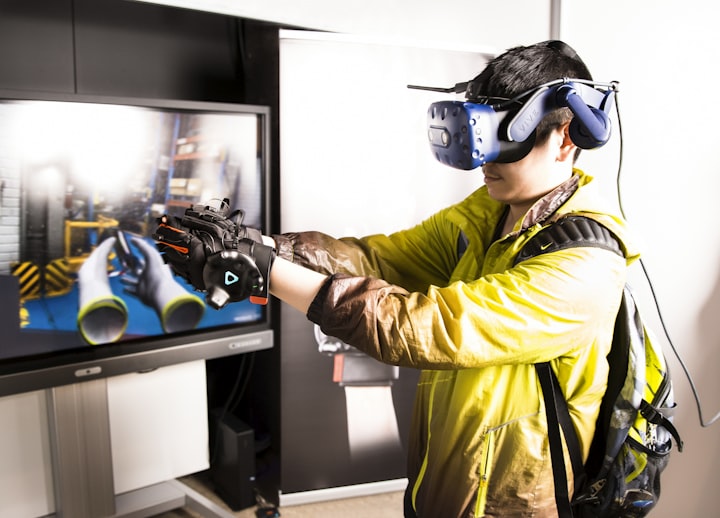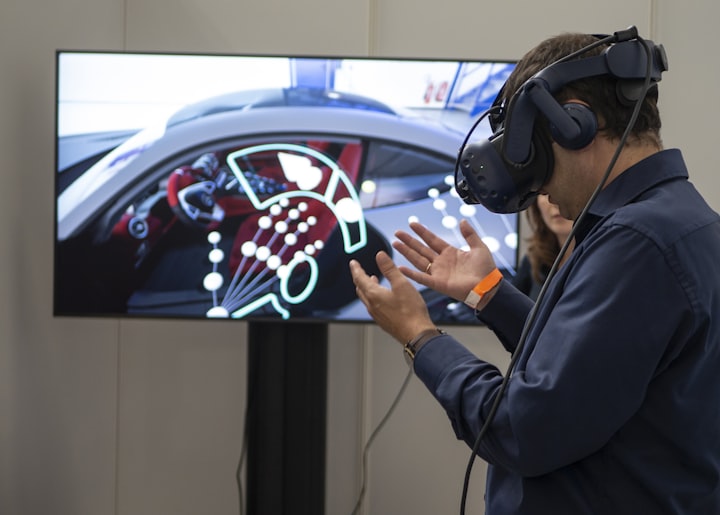Immersive Engagement
Harnessing the Power of Augmented Reality in Newsletter Content
This article provides an overview of the innovative uses of augmented reality (AR) in newsletter content, including the transformation of email marketing campaigns through WebAR, the applications of AR in marketing, the benefits and challenges of implementing AR in brand marketing, successful AR marketing campaigns, and insights into the future of AR in marketing.
Overview of Augmented Reality in Marketing
Augmented reality (AR) is a cutting-edge technology that enriches the real world by superimposing digital information and virtual objects onto the physical environment, thereby enhancing the user experience and providing a new dimension of engagement. This revolutionary technology has significantly impacted the marketing landscape, offering unique opportunities to create interactive and captivating content for users.
In the realm of newsletter content, AR has the power to transform traditional marketing approaches by offering subscribers an immersive and personalized experience. For instance, businesses can utilize AR to showcase product visualizations, allowing customers to virtually try out products before making a purchase decision. This not only enhances user engagement but also builds brand loyalty and trust. Moreover, AR can be leveraged to provide rich, interactive storytelling experiences within newsletters, making the content more memorable and impactful for the audience. As a result, brands can differentiate themselves and leave a lasting impression on subscribers, ultimately driving higher conversion rates and customer retention.
The integration of AR in newsletter content signifies a paradigm shift in marketing strategies, where brands can seamlessly blend digital innovation with traditional communication channels to create captivating and unforgettable experiences for their audience. This dynamic approach not only aligns with the evolving consumer expectations but also sets the stage for a new era of customer engagement and brand storytelling.
WebAR: Enhancing Email Marketing Campaigns
WebAR, a groundbreaking technology, has the power to revolutionize email marketing campaigns by offering immersive AR experiences accessible directly through web browsers without the need for separate apps or downloads. This innovative approach can transform the way businesses engage with their audience, providing a unique and interactive experience that goes beyond traditional marketing strategies. For instance, imagine a cosmetic brand using WebAR to allow customers to virtually try on different shades of lipstick or eyeshadow by simply clicking a link in their email. This not only enhances customer engagement but also adds a personalized and memorable touch to the content, making the brand stand out in a crowded inbox.
When it comes to the types of AR experiences best suited for email marketing, the possibilities are endless. Face-filters can allow subscribers to virtually “try on” different styles of sunglasses or hats, while product visualizations can enable them to see how a piece of furniture would look in their own living space. Location immersion can transport them to a virtual showroom or event, creating a sense of exclusivity and excitement. These immersive experiences not only captivate the audience but also foster a deeper connection with the brand, leading to increased open rates and clicks. Businesses can leverage this technology to create compelling narratives and interactive content that truly resonates with their audience, setting a new standard for email marketing campaigns in the digital age.

Augmented Reality Applications in Marketing
Augmented reality (AR) stands out from virtual reality (VR) by integrating digital elements into the real world, making it a versatile tool for marketing initiatives. For instance, Amazon, Wayfair, and Ikea have successfully incorporated AR into their marketing strategies to offer unique and immersive experiences to their customers. By allowing customers to virtually try products before making a purchase, teaching them how to use products, and providing entertaining AR experiences, these brands have effectively enhanced customer engagement and personalized their marketing content.
Furthermore, AR has found applications in education, where it brings complex ideas to life for students and can be used in training and educational materials for customers and team members. This innovative approach not only enriches learning experiences but also creates a strong connection between brands and their audience by providing valuable and interactive content. Overall, the integration of AR into marketing strategies has the potential to significantly improve personalization and interactions with customers, leading to a more impactful and memorable brand experience.
Benefits and Challenges of Implementing AR in Brand Marketing
The benefits of incorporating augmented reality (AR) into brand marketing initiatives are significant and can have a profound impact on customer engagement and sales. AR has the power to entertain, educate, and assist customers in evaluating products, leading to a more immersive shopping experience. For example, companies like IKEA leverage AR to allow customers to visualize how furniture and décor items would look in their own homes before making a purchase, thereby enhancing the decision-making process and reducing the likelihood of returns.
Moreover, AR can also promote the adoption of online channels and encourage the expansion of product categories. By integrating AR experiences into their online platforms, brands can attract tech-savvy consumers who seek interactive and innovative shopping experiences. Furthermore, AR can enable brands to showcase a wider range of products and services, thereby broadening their offerings and appealing to a more diverse customer base.
However, despite the numerous benefits, there are challenges associated with the implementation of AR in brand marketing. The development costs, time-consuming nature of creating AR content, and the complexities of integration into existing marketing strategies can pose obstacles for brands. Additionally, identifying appropriate use cases for AR experiences can be a daunting task for marketers, as it requires a deep understanding of consumer behavior and preferences. Nonetheless, as technology continues to evolve and consumer expectations shift, more brands are recognizing the need to overcome these challenges and embrace the potential of AR in their marketing efforts.
Successful AR Marketing Campaigns
Successful AR marketing campaigns have demonstrated the transformative potential of augmented reality in engaging and captivating audiences. One such example is the sensational impact of Pokémon GO, which took the world by storm, showcasing the immense popularity and widespread adoption of AR technology in a gaming context. The game seamlessly integrated virtual creatures into real-world environments, sparking a global craze and illustrating the potential for AR to create immersive, location-based experiences that captivate users.
Moreover, major brands like Home Depot, IKEA, and Sephora have harnessed the power of AR to enhance their marketing strategies and customer experiences. For instance, Home Depot’s Project Color app allows users to virtually preview paint colors in their homes, empowering customers with a practical and engaging tool for home improvement projects. Similarly, IKEA’s AR tools enable customers to visualize how furniture and décor items would look in their own spaces, offering a convenient and interactive shopping experience. Additionally, Sephora’s virtual try-on kiosk leverages AR to enable customers to virtually test makeup products, providing a personalized and immersive way to explore cosmetics.
Furthermore, the utilization of AR in social media filters and experiential marketing has redefined consumer engagement. Netflix’s Stranger Things Experience and Pepsi’s AR technology in a London bus shelter are prime examples of how AR has been employed to spark excitement and interactivity, showcasing its capacity to captivate audiences and elevate brand experiences to new heights. These successful campaigns underscore the creative and innovative ways in which AR can be leveraged to create memorable, interactive, and shareable experiences that resonate with consumers.
The Future of AR in Marketing
As we look ahead, the future of augmented reality (AR) in marketing is filled with promise and potential. According to industry forecasts, the global AR, VR, and mixed reality market is expected to experience substantial growth, with projections indicating an increase of over 220 billion USD between 2021 and 2028. This growth signifies the expanding role of AR in shaping immersive and interactive experiences for consumers, presenting an exciting landscape for businesses to leverage this technology in innovative ways.
One prominent advocate for the transformative power of AR is Tim Cook, who has articulated the significance of AR in education and training. Cook’s vision underscores the potential of AR to bring intricate and abstract concepts to life, making it a valuable tool for educators, businesses, and marketing professionals. By integrating AR into educational materials and training resources, companies can enhance customer engagement and knowledge retention, ultimately fostering stronger connections with their target audience.
Despite its relatively new status in marketing, AR presents a wealth of opportunities for businesses to break new ground in content marketing strategies. By embracing AR, companies can deliver fresh and captivating experiences to their audience, setting themselves apart in a crowded digital landscape. This technology allows for the creation of immersive and interactive content that not only captures attention but also fosters meaningful and memorable interactions, providing a powerful avenue for brands to differentiate themselves and forge deeper connections with their customers.
About the Creator
Timothy A Rowland
I’m an every day human Xennial from the United States. I have many interest. I just want to improve your life and maybe entertain you. Available for editing and LeadsLeap projects at: https://www.fiverr.com/greyhatcompany
Enjoyed the story? Support the Creator.
Subscribe for free to receive all their stories in your feed. You could also pledge your support or give them a one-off tip, letting them know you appreciate their work.
Reader insights
Outstanding
Excellent work. Looking forward to reading more!
Top insight
Expert insights and opinions
Arguments were carefully researched and presented







Comments (1)
Thank you for this brilliant insight into AR. It is one of the most informative articles I have ever read about it, and you have aroused my curiosity to a point where I'm thinking about trying an experiment to see how it works for myself.